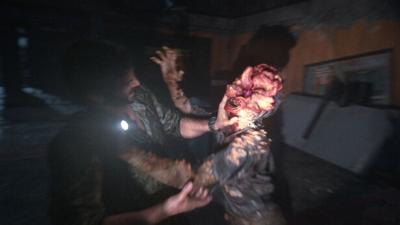A lot can change in a decade.
In the summer of 2013, I lived in a mosquito-ridden basement apartment where I didn’t have much more than a PlayStation 3, a TV and mosquito bites. Still, it made for one of the most memorable summers in gaming because that was when The Last of Us came out. It was a revolutionary game that paired excellent gameplay with a gripping and gritty story set in the fungus-filled future.
More than a few times, the buzz of bugs faded into the background as the game delivered heavy, jaw-dropping moments that left me speechless in a way that I had never before experienced in a video game and have rarely experienced since then.
In the intervening years, The Last of Us received a sequel, a critically acclaimed HBO adaptation and a re-release that brought it from the PlayStation 3 to the PlayStation 5 as well as PC. As far as I go, I now live with my partner in a house that’s mercifully light on bugs. With the show’s debut, we decided to sit down with the re-release, now called The Last of Us Part I. An opportunity to revisit the game for me and the first time experiencing it for her.
In the most basic of terms, The Last of Us is a zombie game set in the not-so-distant future. A mind-altering fungus has leaped from bugs to humans, driving people into a violent, flesh-eating frenzy that has led to the crumbling of society as we know it. Like in so many bits of zombie fiction, it’s not always the zombies — called clickers for their use of echolocation — that are the most dangerous force you’ll run across in your time with the game.
People are on the edge. Some are looking for hope and most, like the main character Joel, are trying to survive in a world where horrifying death is always right around the corner. That changes when Joel crosses paths with a young girl, Ellie, who quite literally embodies hope with her seemingly unique immunity.
The pair of you set out on a journey across the country, a road trip tour of the ruins of civilization and the near-constant human tragedy it entails. The Last of Us is not a light game. It’s filled with emotionally heavy moments, bone-chilling surprises and quite a bit of stomach-churning body horror strung together between expertly directed cutscenes and environmental storytelling through the gameplay, which includes stealth sections, pitched gunfights and the occasional puzzle.
The underlying game is all still there but with upgraded graphics and greatly reduced loading times. The facial animations of the characters, which were great back in 2013, seem to also have taken a big step forward.
If you need an idea of what my partner thought about her first experience with the game — after the credits rolled, she hopped right into the included prequel chapters telling Ellie’s story before the events of the story we just finished.
But why is it so gripping, and why does it stand up so well?
We agreed that one of the things “The Last of Us” does so well is portray complicated characters, their complex relationships and the nuances in how they change in response to the challenges and adversities presented. In a world where most games fit more into the summer blockbuster mold of storytelling, “The Last of Us Part I” feels far more grounded and, in doing so, is much more realistic. That makes the emotionally charged points of the game where fear, grief and anger take over the characters linger with players long after the game is done.
The Last of Us still stands up as a masterpiece and one of the best games ever created. Now I can finally get around to watching the show.
Game: The Last of Us Part I
Platforms: PlayStation (reviewed), PC
Release Date: Sept. 2, 2022
Matt Buxton is a freelance writer and gamer. He can be reached at matt.a.buxton@gmail.com.











